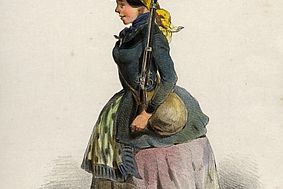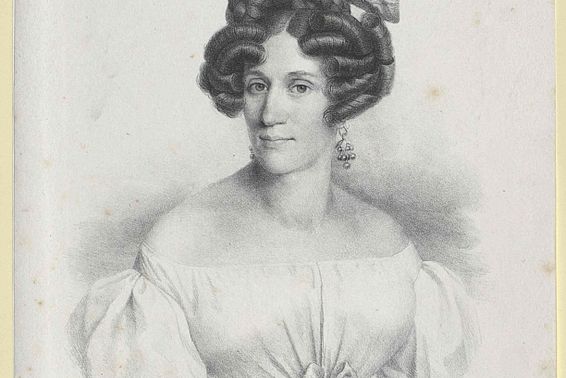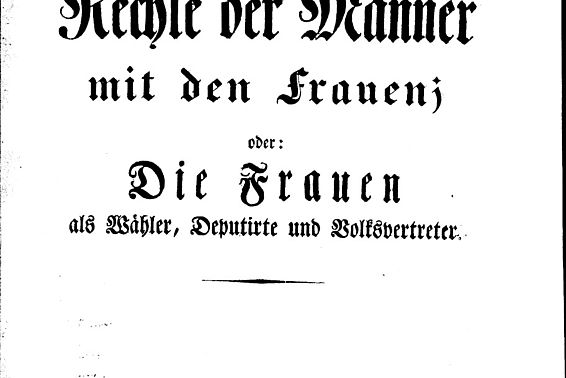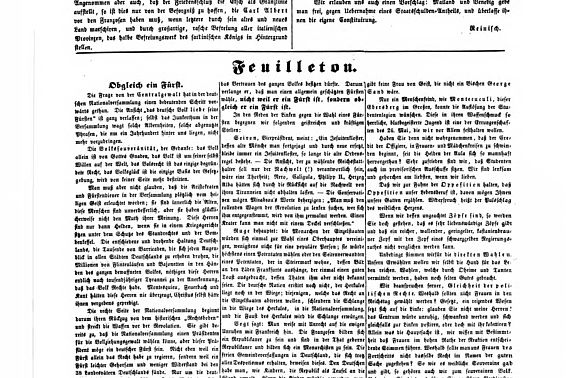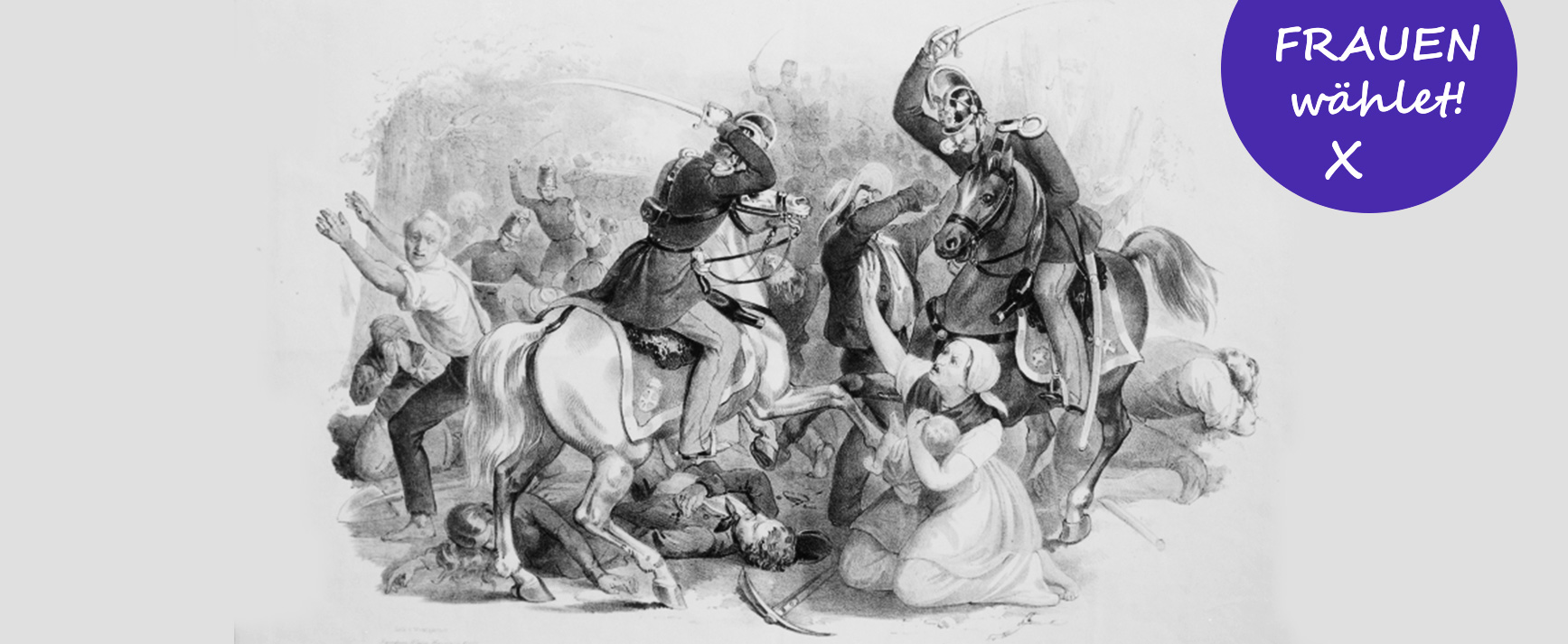
Women at the barricades – 1848
In the absolutist imperial state there were no rights of political co-determination. Opportunities to participate were demanded by the liberal bourgeoisie. They were achieved temporarily in the year of revolutions, 1848. It was then that the question of women’s participation in political life was first raised.
Elections to the Austrian Parliament were held in June 1848. The population generally would not then have understood what an election is. Conditions for eligibility were independence and being a man. Workers were prevented from voting. Female political thought or action were contrary to the bourgeois ideal by which men and women occupied different areas of life and politics were the exclusive preserve of men. But women pioneers spoke out – in pamphlets and newspaper articles: “We claim equality of political rights. Why should women not be elected to Parliament?”
Entitled “Gleichstellung aller Rechte der Männer mit den Frauen; oder: Die Frauen als Wähler, Deputierte und Volksvertreter “ (“Equality of all rights between men and women; or: Women as voters, deputies and elected representatives”), one of the few pamphlets by women on political co-determination appeared in Vienna in 1848. It demanded political rights for women by reason of the “undeniable, inalienable, inherent and ineradicable rights of the female sex”.
Women took part in the revolutionary events in many different ways. On 21 August 1848 the government announced wage cuts for the women working as diggers on public building sites. Groups of female, and some male, workers then marched through the city and occupied streets and squares, demanding that the cuts be reversed for the women. It was the first women’s demonstration in Vienna. Two days later – in the so-called “Praterschlacht” – the National Guard was deployed against the demonstrators and bloody clashes took place.
The constitution of April 1848 allowed female citizens to set up associations. When women were excluded from the men’s associations, they began to organise. On 28 August a group of mainly middle-class women – reports speak of 150 up to several hundred – gathered in the Volksgarten to discuss the formation, remit and statutes of a women’s association. The » Viennese Democratic Women’s Association was the only one of the associations founded during the months of the revolution that was an explicitly political women’s organisation and supported the revolutionary movement. » Karoline Perin-Gradenstein is named President in the statutes. She is the only woman in the Viennese 1848 movement who we know more about than just her name.
With the suppression of the revolution in 1849, democratic aspirations ended for the time being. The right to political co-determination became the province of property owners and the educated. This way, a few privileged women also gained the right to vote. The first elections when they could exercise it were not until the 1860s.

